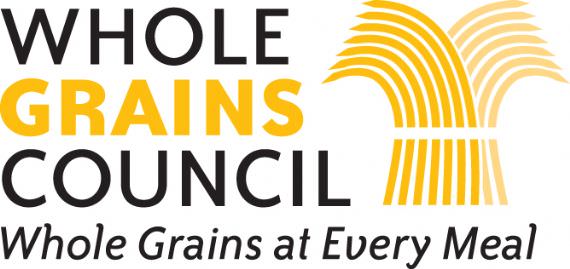|
The dailySpark reader PCGOTMOOSE recently asked about the Whole Grains Council and the significance of their emblem on products at the supermarket. According to a 2007 Hartman Group report, a majority of shoppers are aware of and trust packaging symbols such the American Heart Association heart-check mark, the U.S.D.A. Organic Symbol, standard Recycling symbols and the Whole Grains Stamp. The Dietary Guidelines for Americans issued in 2005 recommends three whole grain servings or more per day. Likewise, the U.S. Department of Agriculture and U.S. Department of Health and Human Services define a complete serving as one that contains at least 16 grams of whole grains. The Whole Grains Stamp is not new but it can assist you in your quest for healthier eating.  What is the Whole Grains Council? The council is "a nonprofit consumer advocacy group working to increase consumption of whole grains for better health." Their focus appears to be fourfold :
In April 2002, a Whole Grains Summit organized by Oldways Preservation Trust was held in San Diego, California. Manufacturers, scientists, chefs, and millers attended the Summit and at its conclusion, many individuals decided it would be beneficial to work cooperatively with Oldways. Oldways was founded in 1990 by K. Dun Gifford with the primary intention of helping people make healthier food and drink choices. Today they remain "dedicated to changing the way people eat through practical and positive programs grounded in science and tradition." In addition to the Whole Grains Council, Oldways also supports its mission through the Latino Nutrition Coalition and the Mediterranean Foods Alliance. What is the Whole Grains Stamp? The stamp was first introduced in January of 2005 immediately following the updated release of the Dietary Guidelines for Americans that indicated at least half of our grain intake should be in the form of whole grains. The Whole Grains Stamp is a reliable identifier to help shoppers select products containing whole grains. There are two variations of the stamp. The 100% Stamp identifies grain products in which all grain ingredients are whole grain. In order to display the stamp, the product must have at least 16 grams of whole grains per serving. The basic stamp indicates products may contain some extra bran, germ, or refined flour but contains a minimum of 8 grams of whole grains per serving or is one-half a whole grain serving. In January 2008, the Whole Grains Menu Symbol was introduced for assistance with whole grain identification on restaurant menus. The simplified grain-sheaf image with the words "whole grain" provides clear imprinting on menus so interested restaurants can easily identify whole grain offerings. What products contain the stamp? The Whole Grains Stamp appears on over 3,300 products throughout 18 countries. There is an extensive list of qualifying products to assist you while you shop. However, care must be taken because while you will find this label on many nutrient rich whole grain sources such as 100% whole wheat bread, rolled oats, and brown rice, you will also find a 100% Stamp on snack foods such as chips, crackers, and cheese puffs. What is the best way to use the stamp? The stamp can be a wonderful food selection aid as you seek to meet the recommended whole grain intake each day. When you are looking at all the various bread options on the shelf, finding one with a 100% Whole Grains Stamp can ensure a healthy choice when you do not have your reading glasses to see all the fine print on the ingredient label or little time to do more than check the price and go. If you are selecting a snack item such as tortilla chips, it can be helpful in finding the better option. However, it is still important to remember it is a snack and perhaps not the most nutrient rich whole grain option and one that would still require good portion control practices. Eating whole grains can reduce your risks of heart disease, stroke, cancer, diabetes, and obesity, which is why health experts agree we need to include more in our diets. The Whole Grains Council and their distinctive stamp can help you and your family easily find whole grain options as you shop. Are you familiar with the Whole Grains Stamp and the Whole Grains Council? How will you use this information the next time you shop? How do you suggest increasing awareness regarding the Council and Stamp? |
More From SparkPeople |



.jpg)











